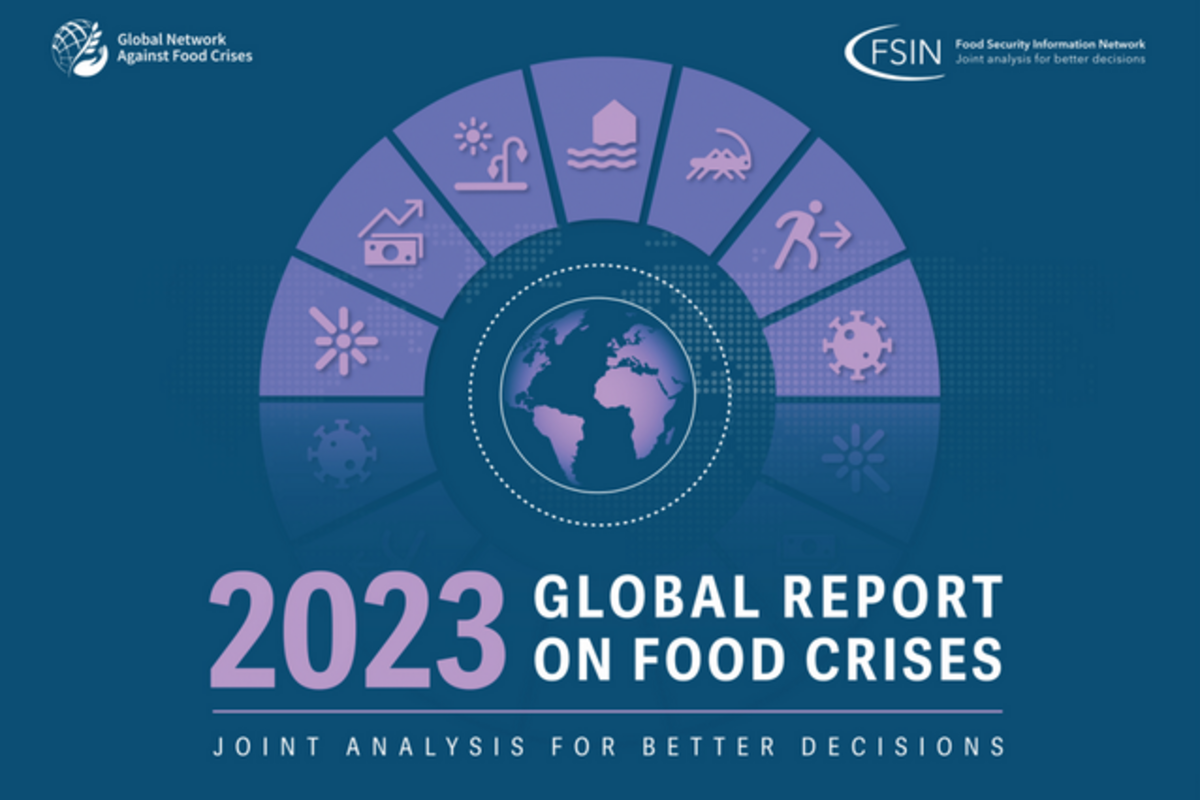The number of people battling acute hunger and suffering from malnutrition is alarming, highest in the last seven years. The global economic shocks set in motion by the COVID-19 pandemic and Russia’s war against Ukraine, together with weather extremes and armed conflicts in some countries, are driving millions of people into acute food insecurity and malnutrition.
In 2022, around 258 million people across 58 countries faced high levels of acute food insecurity requiring urgent assistance, according to the freshly published Global Report on Food Crises 2023. The figure is the highest since the first Global Report was published in 2016. A 22.7% share of the analysed population was affected, which is also the highest since the report was first published. The report is compiled by the Global Network against Food Crises, an alliance of humanitarian and development actors working to help tackle food crises.
The situation remains dire in key conflict areas, notably in the Democratic Republic of the Congo, with 26.4 million affected by high levels of acute food insecurity, South Sudan with 7.7 million, and Yemen with 17.4 million. The number of countries where conflict / insecurity was the main driver of acute food insecurity passed from 24 in 2021 to 19 in 2022.
Weather extremes and economic shocks have led to increasing acute food insecurity in countries such as Haiti, Pakistan and Zimbabwe. The number of countries where economic shocks were considered the main driver of food insecurity increased from 21 countries in 2021 to 27 countries in 2022. Weather extremes have become the main driver in 12 countries in 2022, up from 8 in 2021.
According to the report, the Democratic Republic of the Congo, Ethiopia, Nigeria, Afghanistan, Yemen, Myanmar, the Syrian Arab Republic, Sudan, Ukraine and Pakistan are the world’s 10 hungriest countries. Together they account for more than 60% of the total population affected by high levels of acute food insecurity according to analyses and evidence provided by multi-partner initiatives on food security assessment such as the Integrated food security Phase Classification (IPC), the Cadre Harmonisé (CH) and other equivalent metrics.
The report also identifies the numbers of children under five years of age suffering from acute malnutrition. In 2022, in the 32 countries where data was available, about 35 million children under 5 years of age suffered from acute malnutrition, of whom 9.2 million were severely wasted and in need of urgent treatment.
Acute food insecurity projections for 2023
The Global Report on Food Crisis 2023 has analysed projections available for 38 of the 58 countries/territories as of March 2023. From that analysis, the report concludes that up to 153.3 million people of the analysed populationwill experience high levels of acute food insecurity in 2023.
Economic shocks will be the main driver of acute food insecurity in 22 of the countries for which estimates are available for 2023. Conflict and weather extremes will be the main driver in 10 and 6 countries respectively.
JRC support to data analysis and intelligence
The Global Network against Food Crises closely monitors the situation and works to provide timely data, analyses and intelligence on the impact of conflict, economic shocks and weather extremes on food security and nutrition.
The JRC is part of the technical team that analyses the data of the report each year as well as of the Senior Committee. It also provides technical and advisory support to the Integrated food security Phase Classification (IPC) and the Cadre Harmonisé (CH) frameworks and became a member of the Food Security Information Network (FSIN) Steering Committee in 2023.
This year, given the unprecedented nature of the crisis, creating a better understanding of the impacts of Russia’s war in Ukraine on the global supply of food and agricultural inputs and climatic and economic shock on vulnerable households’ livelihoods is of paramount importance and urgency.
The JRC contributed to the Ukraine section of the report with information based on the knowledge reviews performed in this domain, the MARS bulletin, and on a recent research paper co-authored by the World Bank, the JRC, the National Technical University of Ukraine and the Ukrainian Space Research Institute.
The JRC will support the regular monitoring of the situation, including through the IPC and the CH frameworks. The JRC’s Anomaly Hotspots of Agricultural Production (ASAP) is also a near real time source of information feeding into IPC and CH analysis.
About the Global Network against Food Crises
Launched by the European Union, the Food and Agriculture Organization of the United Nations (FAO) and the World Food Programme (WFP) in 2016, the Global Network against Food Crises seeks to better link, integrate and guide existing initiatives, partnerships, programmes and policy processes to address the root causes of food crises.
The JRC published the first Global Report on Food Crises in 2016 in collaboration with the then European Commission's Directorate-General for International Cooperation and Development, now International Partnerships.
Since then, the annual report has become an international multi-partner initiative under the Global Network against Food Crises and is its flagship publication.
Today, the Global Report on Food Crises 2023 is the result of a joint, consensus-based assessment of acute food insecurity situations around the world by 16 partner organisations.
EU action
The EU invests in finding sustainable, medium and long-term solutions to food security challenges, while also delivering emergency assistance to people facing humanitarian crises. We promote sustainable and resilient food systems and support our partner countries’ strategic autonomy.
Together with the Member States, the EU has mobilised almost EUR 18 billion to help partner countries address the global food crisis until 2024. Almost EUR 7 billion has already been disbursed in 2022. The EU has launched targeted initiatives to boost local food production and decrease dependence on unsustainable imports.
Furthermore, we actively support the African Free Continental Trade Area to enhance intra-regional agri-food trade.
Related links
Knowledge Review on the impact of Russia’s war on global food security
